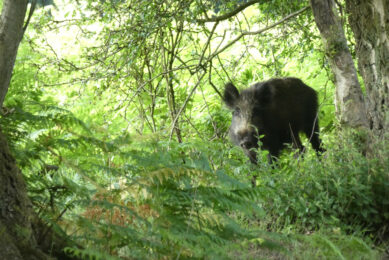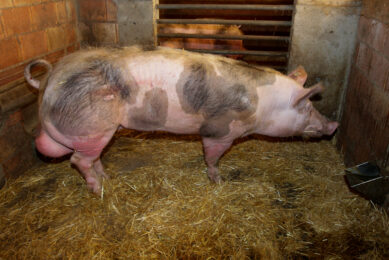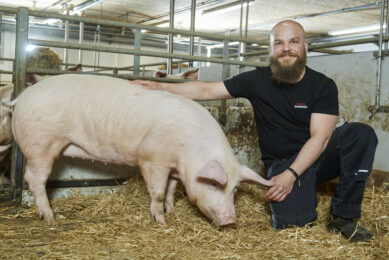Hypor: Standardising the use of Genomic Selection

Global pig genetics specialist, Hypor, is standardising the use of Genomic Selection in its breeding program. Hypor’s customers can now make choices based on the Genomic Breeding Value of stock to improve breeding results and enhance their business’ profitability.
Hypor introduced the standard integration of Genomic Selection into its breeding program one year ago, signifying the start of a new era of genomic breeding. During the past year this has progressed to incorporate a greater proportion of Hypor’s lines and an increasing number of animals that are DNA-sampled. In addition, the number of genetic traits analyzed in the Genomic Selection process has also increased. Hypor’s Great Grand Parent (GGP)-pigs are now selected on a Genomic Breeding Value that is based on each pig’s unique pattern of DNA-markers. The system offers pig producers more opportunities to increase the profitability of their total system.
“With Genomic Selection we can make genetic differences visible at the top of the breeding pyramid. And this can be done as soon as we have analyzed the DNA sample from a single animal,” said Benny van Haandel, Director of R&D at Hypor. “Genomic breeding is now not only practiced within Hypor’s breeding nuclei, but within in-house breeding programs of our clients where it enables us to detect animals that match the individual client requirements best.”
The first customer to join Hypor’s Genomic Selection program is Hyvar Select, located in Belgium. It is using Genomic Selection to select replacement animals for its Hypor Landrace satellite nucleus and is already finding that it offers superior results.
“We still use a computer model based on the best linear unbiased prediction (BLUP) as our main selection tool to assess the breeding values,” said Kris Lauwerysen, Owner of Hyvar Select. “Previously, we would use the tool to assess the breeding potential of mother and father, and to explore which litters had promise for the breeding program. The choice of individual piglets from the best litters was based on appearance and it was a bit of a gamble as to the breeding potential and eventual performance of the stock chosen. However, with Genomic Selection parameters now incorporated in the selection process, we can now identify exactly which individual animals within the litters have the best genetic potential for the traits that we want to improve.”
“Our advice to customers is to focus on high-impact animals, such as GGP – and GP-boars, first,” added Benny van Haandel. “The offspring of these boars that are selected on the basis of genomics, with the higher accuracy that it offers, will directly increase a system’s genetic progress by between 20 and 50% across the Parent stock population.”
Genomic Future
Genomic Selection has a bright future. Hypor is exploring many new applications to optimize the use of this emerging technology. As technological developments help to rapidly reduce the cost of genotyping and sequencing, it offers even more promise. The information captured in genotypes can be used to hunt for specific genes or genomic regions with a large impact on traits of interest. It is generally anticipated that additional genetic progress can be expected due the implementation of Genomic Selection for traits that are measured late in life or are difficult to measure.
Through Genomic Selection, Hypor is pioneering new standards in pig breeding. As part of multi-species animal genetics company, Hendrix Genetics, Hypor leverages the benefits of advanced research and development in Genomic Selection in other species. Over the next decade, many new traits will be added to Hypor’s breeding goals, such as disease resistance, to, for example, Porcine Reproductive and Respiratory Syndrome Virus (PRRS) Virus.
“The Genomic Era for pig production has just only started and Hypor is both excited and delighted to be at the very forefront of it,“ concluded Benny van Haandel.











